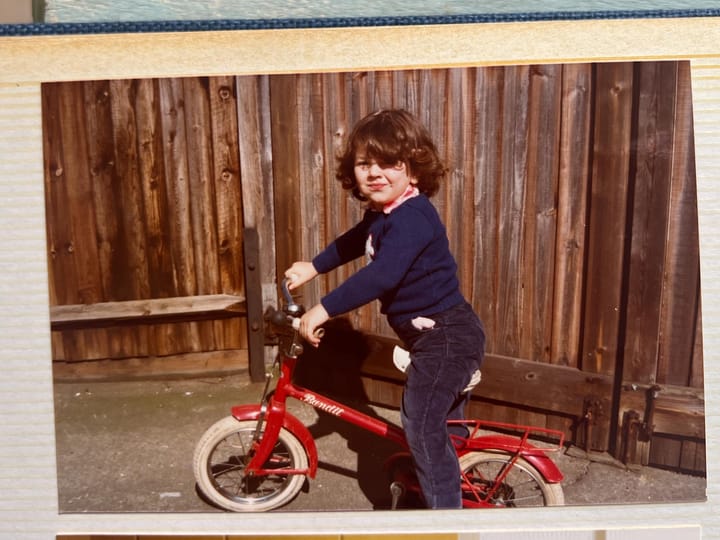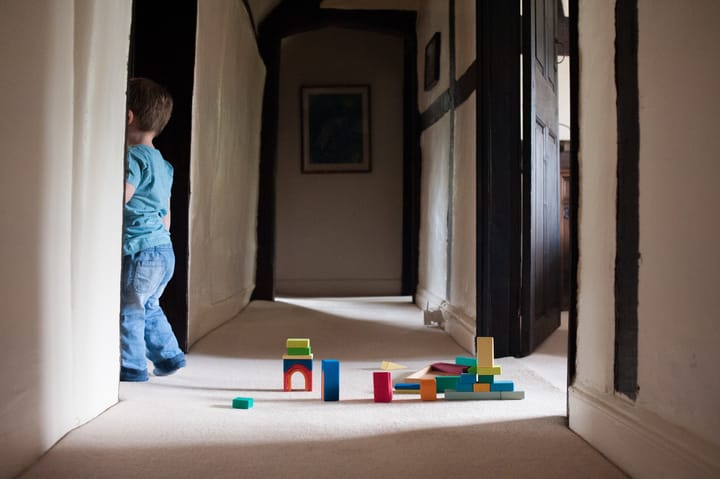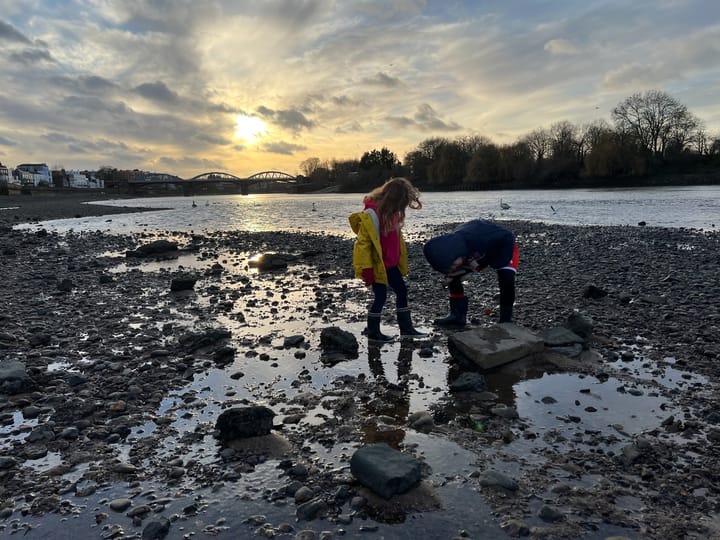Play heritage: the hidden foundation of childhood your child is missing
Your own childhood is a living library of play, an apprenticeship in being young. Does your own child have the same rich play vocabulary as you did? Perhaps you could teach her?

Remember the sound of skipping ropes on concrete, the rhythm of clapping games echoing across the playground? Remember the exact words to "A Sailor Went to Sea, Sea, Sea" or the unwritten rules of British Bulldog?
These weren't just games. They were treasures passed down through generations of children, creating a rich tapestry of play that we now call "play heritage."
Your childhood: a living library of play
Think back to your own childhood. You didn't learn these games from adults or instruction manuals. You learned them in the playground, on street corners, in back gardens. Older children taught younger ones the rules of hopscotch, the perfect technique for playing conkers, the secret to making a paper fortune teller.
This wasn't just play - it was an apprenticeship in childhood culture.
Remember how it felt to finally master Double Dutch? Or to be trusted to teach a younger child the rules of What's the Time, Mr Wolf? You weren't just playing - you were part of an ancient tradition of children teaching children.
The language of play
Just as you learned your mother tongue naturally through immersion, you absorbed what we call "cultural play vocabulary" - the shared understanding that made play possible:
The words. "Oranges and lemons," "In and out the dusty bluebells," "One potato, two potato, three potato, four." These weren't just rhymes - they were the poetry of childhood, passed down like oral traditions.
The movements. The specific way to swing your arms in "Ring a Ring o' Roses," how to hop through a hopscotch grid, the perfect stance for marbles. Your body learned a language all its own.
The social rules. How to join a game in progress (you wait for a natural break, then ask "Please can I play?"). How to handle disputes (rock, paper, scissors, anyone?). How to gracefully accept being "out" without crying or quitting.
Why your child might be missing out
Today's children often struggle to play independently not because they lack creativity, but because they're missing these fundamental building blocks of play. It's like trying to write stories without first learning the alphabet.
When was the last time you saw a group of children playing "Grandmother's Footsteps" or "Simon Says" without adult direction? These games aren't just disappearing - they're taking with them crucial lessons in social skills, physical coordination, and creative thinking.
The cultural richness we're losing
Every region of Britain has its own play heritage. Perhaps your grandparents taught you games from their childhood, or you learned variations of familiar games from children who moved to your neighbourhood.
In Scotland, children still play "Peever" (hopscotch with specific regional rules). In Wales, traditional games like "Bando" teach coordination and strategy through play. These games aren't just entertainment - they're living links to cultural identity and community values.
Bridging the generation gap
If you grew up in the 1970s or '80s, your play probably involved more street games and physical activity. If you're a millennial parent, you might have memories of early video games mixed with traditional play. Each generation has its own play heritage to share.
The key isn't to recreate your exact childhood - it's to pass on the spirit of self-directed, creative play that made those experiences so valuable.
Bringing play heritage back to life
You are a living library of play knowledge. Here's how to share it:
Start with stories. Tell your child about the games you played. Show her photos of you playing as a child. Make it real and personal.
Teach one game at a time. Don't overwhelm her. Start with something simple like "Duck, Duck, Goose" or clapping games. Let her master it and make it her own.
Create opportunities. Invite other families over for traditional games. Let children teach each other - that's how play heritage naturally spreads.
Embrace modern adaptations. If your child creates new variations of old games, celebrate her creativity. Play heritage was never meant to be static.
Working within modern constraints
Yes, we have to navigate modern realities - busy schedules, safety concerns, smaller families. But we can adapt:
Create safe spaces. If street play isn't possible, designate areas in your home or garden for active games.
Use playdates intentionally. Instead of just parallel play with tablets, teach children traditional games they can share with others.
Build community. Connect with other parents who want to revive traditional play. Share your play heritage with each other.
The magic of transmission
Recently, my neighbour's daughter came home excited about learning Cat's Cradle at school. Her mother remembered it from her own childhood and spent the evening teaching her daughter new string figures. That night, a piece of play heritage came alive again, bridging generations through the simple magic of string and fingers.
This is how it happens - one game, one rhyme, one tradition at a time.
Your childhood games aren't relics of the past. They're seeds waiting to be planted in the fertile soil of your child's imagination. What will you share first?
Remember: The simplest games often create the richest play. A skipping rope, some chalk, a handful of marbles - these basic tools have sparked joy for generations. They still can.
What games do you remember? What pieces of play heritage are you ready to pass on?



Comments ()